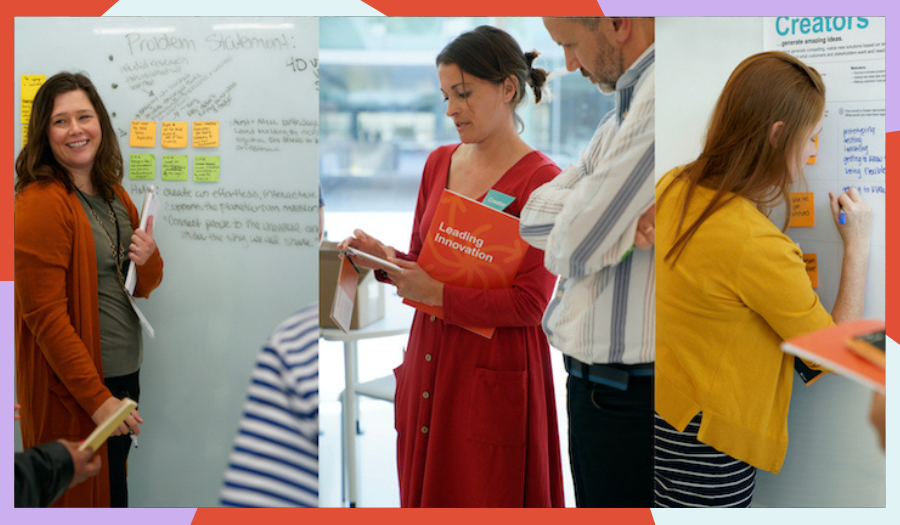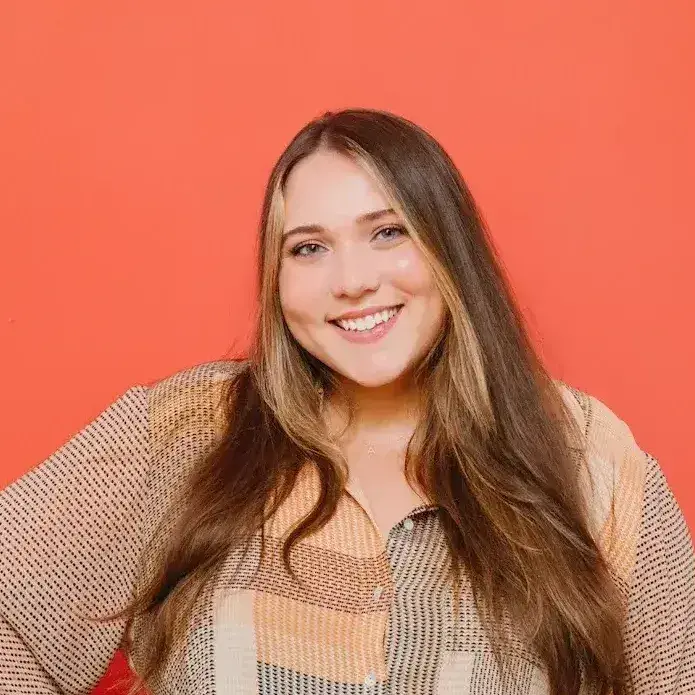Picture this: A large private sector company identifies a new challenge that requires a creative solution. Despite its resources, the company can’t employ all of the people that will bring the best and needed ideas to the table. Enter P&G. The company’s challenge was to design a product that eclipsed the classic mop, a product that could effectively clean with less hassle and time. So P&G extended its partnership model to invite outsiders into the design cycle. “You have your Swiffer to thank for these efforts,” said Roger Mader, Managing Partner of Ampersand.vc, a design-led innovation consultancy and investor.
This idea of bringing partners, students, and even competitors under the design tent to bring a solution to market, is a whole new level of “open innovation.” And it’s just one of many emerging trends in the design space.
“How far could this go? What would happen if P&G invited each of us, as their customers, to invent the future? What if they invited in student teams? What if they worked with the Centers for Disease Control and Prevention to protect their customers’ homes from the common cold, the flu, coronavirus,” said Stephanie Smith, Director of Corporate and Community Partner Engagement at the Institute of Design (ID).
To get a better sense of how far design can and will go -- and how we can best equip people to lead the change -- we turned to Stephanie, Roger, and the IIT Institute of Design.
Forget Design, Sort Of
When design was becoming a hot thing at large organizations, “People started wanting it without knowing what it was or what it did or how it would benefit them,” Roger said. This presented a bit of a challenge, but also a key opportunity for ID. “Design requires a renovation of culture to be fully and properly adopted. It is literally designed to challenge the status quo. The evolution that we’ve seen is falling on that realization,” Roger said.
Forget design, Stephanie and Roger explained. “It’s a means to an end. If you obsess about design, you could miss the point. Instead, focus on purpose,” Stephanie said.
It’s a means to an end. If you obsess about design, you could miss the point. Instead, focus on purpose.
Stephanie Smith, Director of Corporate and Community Partner Engagement
In a recently released report, Lead with Purpose, ID explains that, “Embracing design for competitive advantage requires understanding and serving not only the customer and the customer’s world, but also one’s own colleagues and organization.”
ID seeks to “professionalize” design. While ID is a powerhouse for innovative human-centered design and systems design, its history goes back to 1937, when the institute was founded by László Moholy-Nagy, then known as The New Bauhaus. ID currently has 125 students in its traditional degree programs: MDes, MDM, and a PhD. It’s the only higher education institution in the U.S. with a design school devoted completely to graduate students, and the first to offer a PhD in design. It also offers a novel path of Executive Education, including the beloved ID Design Camp.
You need to have executive teams that understand that they’re under threat, that they’re insufficiently relevant to their customers, that new competitors are taking the spotlight. Suddenly, design becomes a really interesting way for them to solve the fundamental problem of connecting with customers,” Roger said.
Hello Muddah, Hello Faddah. Here I am at Camp … Design!
ID Design Camp started 15 years ago as an annual four-day, design-driven innovation session. Professionals from nonprofits and corporations learn the ID brand of strategic thinking from faculty and practitioners, to develop new ideas they can bring back to their workplace. “It’s human-centered design immersion,” Stephanie said. “Organizations were identifying a need to introduce design more widely and were looking for people to help do that.”
Some participants come with a design background; many do not. Those with design skills may know how to make things but they haven’t had a say in how or why it should be made. “That shift in the strategic lens of design and understanding, toward how to create the ‘new’ and get a seat at that table is often the motivation for students coming to the school,” Stephanie said.
“Today, many people are given the role of innovator and asked to develop these capabilities. They turn to the design camps to help ground them in what that mindset is and what the approaches are,” Stephanie said.
One of the reasons I love ID Design Camp is that it’s a full cycle of applied design
Roger Mader, Managing Partner of Ampersand.vc
“It starts from how you might frame a problem all the way to prototyping and refining the solution, and everything in between,” Stephanie said.
The 2020 Design Camp couldn’t sound more intriguing: “We have our participants form teams to solve a problem,” Roger said. Teams go through stages of the design cycle to conceive alternative paths, prototype them, then bring the “lightweight prototypes” to test them out.
“All too often, design is thought of as the production of something tangible. We found the most valuable designs tend to be around a more holistic experience, and a product is a part of that experience,” Roger said.
The result? Participants have leveraged ID Design Camp learnings to facilitate international workshops, lead creative projects, and manage organizational innovation efforts. They leave with ready-to-use frameworks and tools for practicing innovation and managing the creative process.
As much as ID Design Camp is grounded in mindset shifts, it’s also grounded in reality. “We don’t expect people to leave the program and then become a practitioner overnight,” Stephanie said.
“We hit the right level of rigor but also depth for readiness. Participants get an understanding of what the value of this approach is, how it’s different from other methods, and they get a sense of practicing it by experiencing four days of actually doing it,” Stephanie said.
“They will leave with a better understanding of where the gaps may be in what they’re trying to build at their organization, the types of people that will need to be involved, and what will help them start to build a pathway toward that capability in their professional lives,” Stephanie said.
Be a Part of Better
Design is ever-evolving. ID Design Camp is offered every year, allowing the program to adopt and teach the latest trends and opportunities, in a real-world and very practical way. “The opportunities go on and on. Until we are all part of the design solution, we have only scratched the surface,” Stephanie said.
At Bamboo Crowd, we’re excited to see so many new methodologies, approaches, and perspectives, and to help our partners find the right talent to usher these changes into and across organizations. We turn to ID’s Lead with Purpose report for a snapshot of eight trends shaping the current moment:
- Sustainable systems will be nonnegotiable: Instead of tasking social responsibility departments to compensate for unsustainable solutions, companies will embed smart and inclusive growth into their production systems.
- Diversity enables growth: The design process will amplify diversity in decision-making by bringing cross-functional teams together and leveraging design strengths, like facilitation and collaboration.
- Educational models will shift: People want to supplement formal design degrees with other educational opportunities. Organizations will also develop their own internal, supplemental educational programs to democratize design and teach it to non-designers. We see this in ID’s Executive Education and ID Design Camp, as well as custom offerings like design capability training, masterclasses, and workshops (ID will come to you).
- Automation will challenge the status quo: Designers will have to “humanize” the applications of automated technologies into the business and future-proof them (as much as possible) for long-term unintended consequences.
- Ethics are a priority: Design is instrumental to both advancing vision and reflecting values; design can bring an ethical “checks and balances” mindset to corporate ethics conversations.
- The digital distinction will dissolve: In challenging legacy structures, organizations will build responsive ecosystems to support the curated, customized, and continuous experiences that audiences increasingly expect.
- Core values matter more than ever: Designers will ensure that organizations operate with integrity and keep social responsibility at the forefront of the development process.
- Collaboration! As highlighted in the P&G example at the start, design has and always will be a team sport. We’ll see the boundaries of collaboration continue to expand, including customers, students, partners, and, yes, even competitors.
Shifting trends in design, coupled with the right learning opportunities, will help us all not just “make pretty” but make better. Be a part of better! Consider joining ID Design Camp in July, learn more and register here.

